#shapely supercluster
Explore tagged Tumblr posts
Text
'The models were right!' Astronomers locate universe's 'missing' matter in the largest cosmic structures
0 notes
Text
This is a realistic depiction of a galaxy supercluster, one of the largest structures in the universe. Each bright spot represents an entire galaxy, made up of billions of stars, gas, and dust. These clusters are connected by the gravitational forces that shape the cosmos, stretching across vast distances in space. It’s a reminder of just how immense and mysterious the universe truly is.

#galaxia#galaxy#galaxies#astronomy#nasa#astronomers#universe#nasa photos#astrophotography#outer space#astrophysics#nasawebb#hubble space telescope#space travel#space program#international space station#space science#space exploration#space#james webb space telescope#our universe#the universe#alternate universe#cosmos#deep sky#outer solar system#exoplanet#telescope#astronomy facts#nasa astronauts
55 notes
·
View notes
Text


Our cosmic neighborhood may be 10x larger
A team of international researchers guided by astronomers at University of Hawaiʻi Institute for Astronomy is challenging our understanding of the universe with groundbreaking findings that suggest our cosmic neighborhood may be far larger than previously thought. The Cosmicflows team has been studying the movements of 56,000 galaxies, revealing a potential shift in the scale of our galactic basin of attraction.
A decade ago, the team concluded that our galaxy, the Milky Way, resides within a massive basin of attraction called Laniākea, stretching 500 million light-years across. However, new data suggests that this understanding may only scratch the surface. There is now a 60% probability that we are part of an even grander structure, potentially 10 times larger in volume, centered on the Shapley concentration—a region packed with an immense amount of mass and gravitational pull. The findings were recently published in Nature Astronomy.
“Our universe is like a giant web, with galaxies lying along filaments and clustering at nodes where gravitational forces pull them together,” said UH Astronomer R. Brent Tully, one of the study’s lead researchers. “Just as water flows within watersheds, galaxies flow within cosmic basins of attraction. The discovery of these larger basins could fundamentally change our understanding of cosmic structure.”
Vast cosmos
The universe’s origins date back 13 billion years when tiny differences in density began to shape the cosmos, growing under the influence of gravity into the vast structures we see today. But if our galaxy is part of a basin of attraction much larger than Laniākea, which means immense heaven in the Hawaiian language, it would suggest that the initial seeds of cosmic structure grew far beyond current models.
“This discovery presents a challenge: our cosmic surveys may not yet be large enough to map the full extent of these immense basins,” said UH astronomer and co-author Ehsan Kourkchi. “We are still gazing through giant eyes, but even these eyes may not be big enough to capture the full picture of our universe.”
Gravitational forces
The researchers evaluate these large-scale structures by examining their impact on the motions of galaxies. A galaxy between two such structures will be caught in a gravitational tug-of-war in which the balance of the gravitational forces from the surrounding large-scale structures determines the galaxy’s motion. By mapping the velocities of galaxies throughout our local universe, the team is able to define the region of space where each supercluster dominates.
The researchers are set to continue their quest to map the largest structures of the cosmos, driven by the possibility that our place in the universe is part of a far more expansive and interconnected system than ever imagined.
TOP IMAGE: Galaxy motions converge into colored basins of attraction. The Milky Way is shown as the red dot. Credit University of Hawaiʻi
LOWER IMAGE: Laniākea, an immense supercluster of galaxies, including our own. Credit University of Hawaiʻi
8 notes
·
View notes
Text

@ExploreCosmos_: The Milky Way, part of the Laniakea Supercluster, may belong to an even larger cosmic structure known as the Shapley Concentration. This region, a "basin of attraction," contains a massive collection of galaxies, galaxy clusters, and dark matter, making it one of the most significant concentrations of matter in the local Universe. These basins act as gravitational attractors, influencing the motion of galaxies around them. Astronomers have measured the motions of 56,000 galaxies to understand these basins and their distribution in space. Redshift surveys revealed evidence of larger attractors, such as the Shapley Concentration, which may be ten times the size of Laniakea and comparable to the Sloan Great Wall. This structure is pulling the Milky Way and surrounding galaxies toward it, reshaping our understanding of cosmic structures and gravity's role in the Universe. The team's research also focuses on measuring the peculiar velocities of galaxies, comparing their actual motion to the expected motion from the Universe's expansion. This analysis, which accounts for both visible and dark matter, provides a more detailed picture of how gravity shapes the cosmos. However, current surveys may not yet be large enough to capture the full extent of these vast cosmic basins.
youtube
#milky way#structure#astrology#astronomy#cluster#There are more things in heaven and earth Horatio than are dreamt of in your philosophy#Knowledge#Youtube#Laniakea Supercluster
7 notes
·
View notes
Note
3, 5, 17 and 18, please! 💜
(From this fic ask game post)
3. What are your top three most commonly used tags on AO3?
I admit I had to go check because I wasn't sure and some of the answers left me quite surprised myself lmao. Anyway, in all categories, my top 3 tags are Loki, Thor, Crack - I think it shapes a pretty clear image of my writing all things consider.
5. What’s something you learned while researching a fic?
Many many many things, but for once, that both gray and grey are technically correct spellings for the color (or colour. English is so weird for a non-native speaker T.T). Another thing is the Laniakea Supercluster (fascinating), how military and navy addresses works (confusing), the mongolian steppe nomadic lifestyle. Just to name a few of the most recent.
17. What is something you recently felt proud of in your writing?
Formatting, I'm working on a fic heavily inspired from the web and so formatting it correctly so that it can be legible across multiple devicis while maintaining my stylistics choices has been a nightmare, but very rewarding. I hope to post it soon.
18. How many WIPs do you have and how many do you expect to finish?
Hmmm, I counted them recently for another ask game that you can find here (still playing too) and I have 26 active wips. I have concrete plans to finish 7 of them lol (this doesn't mean I won't finish the other 19 someday, hope is the last thing to die and all that, just that I don't have plans for/how to finish them).
Thanks for asking @goth-automaton!
2 notes
·
View notes
Text
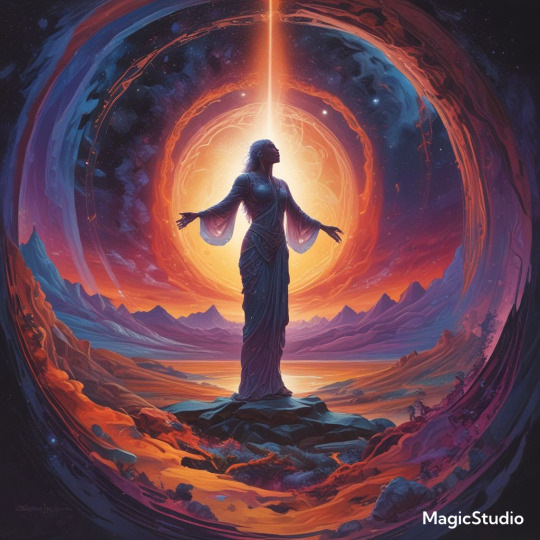
Unveiling the Cosmic Dance: From Milkomeda to Laniakea, Across the Vast Void
The vastness of the universe is impressive. It consists of billions of galaxies that extend over billions of light years. But within this immense expanse, our cosmic neighborhood, the so-called local universe, has a special significance. Here we find our home galaxy, the Milky Way, and countless other celestial bodies that shape our understanding of the cosmos. Let's embark on a journey through the local universe and explore the fascinating structures of galaxy groups, clusters and superclusters and their role in the larger structure of the cosmos.
Our immediate cosmic family is the Local Group, a collection of galaxies held together by gravity. This small-scale structure consists of the Milky Way, the Andromeda Galaxy (M31), the Triangulum Galaxy (M33), and about 50 dwarf galaxies. Although the Local Group may seem insignificant compared to the vastness of the Universe, it is a crucial laboratory for studying galaxy interactions and dynamics.
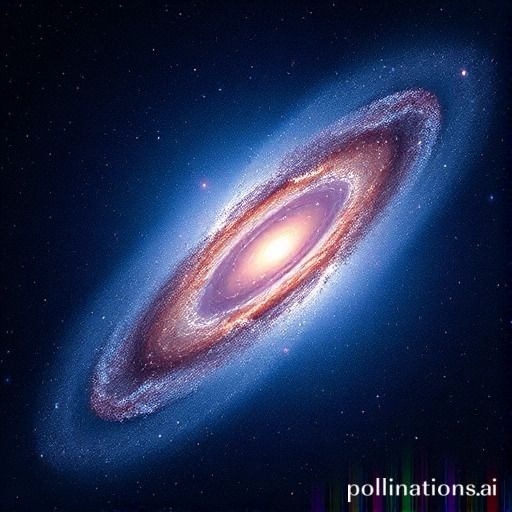
The Andromeda Galaxy, our nearest large star neighbor, is a stunning sight in the night sky. With its spiral arms and bright core, M31 is a prominent feature of the constellation Andromeda. The May 10, 2009 Astronomy Picture of the Day shows M31 and its companion, the elliptical galaxy M32, providing a stunning visual representation of the beauty and complexity of the Local Group.

One of the most fascinating aspects of the Local Group is the future collision between the Milky Way and the Andromeda Galaxy. In about 4.5 billion years, these two majestic galaxies will merge and form a new entity called "Milkomeda." This cosmic event highlights the dynamic nature of galactic interactions and the ever-evolving nature of our local Universe.
As we expand our view beyond the Local Group, we encounter larger and more diverse structures - galaxy groups and clusters. These are collections of galaxies held together by the gravitational forces that shape the Universe. Galaxy groups and clusters come in different sizes and densities, and each offers unique insights into the evolution and behavior of galaxies.

Paul Hickson identified Hickson Compact Groups as small, dense collections of galaxies. These groups are of particular interest because of their potential for galaxy mergers and interactions. In such a small space, galaxies can be subject to tidal forces, gas ejection and gravitational perturbations, leading to the formation of new types of galaxies and the reshaping of existing ones.

The Virgo Cluster is a prominent galaxy cluster in the local Universe, located in the constellation Virgo. It is a rich cluster containing thousands of galaxies, including giant elliptical galaxies and numerous spiral galaxies. The Virgo Cluster is a prime example of how galaxies gather and interact in a dense environment, influencing each other's evolution.
Rich galaxy clusters are cosmic giants containing thousands to tens of thousands of galaxies and huge amounts of hot gas. These clusters are not only impressive in size, but also crucial for understanding the distribution of matter in the universe and the role of dark matter.

The Coma Cluster in the constellation Coma Berenices is a remarkably rich galaxy cluster. It is one of the most distant objects visible to the naked eye and contains a diverse population of galaxies. The high density of galaxies and the hot gas within the cluster make the Coma Cluster an ideal laboratory for studying cluster dynamics and the effects of gravitational interactions on galaxy evolution.

The Abell Catalog, compiled by astronomer George Abell, is a comprehensive list of rich galaxy clusters. Named after their discoverer, these clusters are crucial for mapping the large-scale structure of the Universe. Abell clusters such as Abell 02352 and Abell 03496 (the Hercules Cluster) are massive structures that contribute significantly to our understanding of the cosmic web.

A critical aspect of galaxy clusters is the presence of dark matter, a mysterious and invisible substance that makes up most of the mass of these structures. The gravitational influence of dark matter is enormous, as it holds galaxies together in clusters and superclusters. In fact, most of the mass in galaxy clusters is dark matter, making it a dominant force in shaping the cosmic landscape.

The hot gas in dense galaxy clusters, the so-called intracluster medium, is a remarkable feature. Heated to millions of degrees, this gas emits X-rays that can outshine the light from individual galaxies. Studying this X-ray-emitting gas provides valuable insights into the temperature, density and overall mass distribution of the cluster. It is a powerful tool for astronomers to study the invisible dark matter and understand the dynamics of these massive structures.
As we travel through the local universe, we encounter superclusters, the largest known structures in the cosmos. Superclusters are vast collections of galaxy groups and clusters connected by galaxy filaments. They are the building blocks of the cosmic web, the complex network that spans the entire observable universe.

The Virgo Supercluster is our home supercluster, which contains the Local Group and the Virgo Cluster. It is a massive structure that spans 100 million light-years, making it a significant landmark in our cosmic neighborhood. The Virgo Supercluster is a crucial part of the larger Laniakea Supercluster, which defines our place in the cosmic web.

In 2014, astronomers defined the boundaries of the Laniakea Supercluster, a massive structure that encompasses and extends far beyond the Virgo Supercluster. Laniakea, which means "immeasurable sky" in Hawaiian, represents our cosmic home on a grand scale. Understanding superclusters like Laniakea is critical to mapping the large-scale structure of the universe and our place in it.

When we zoom in to even larger scales, we encounter the most extensive structures in the universe, including voids, filaments, and walls. These features form the cosmic web, a complex network that defines the distribution of matter in the universe.

Voids are vast, empty regions of space with few or no galaxies. They are the cosmic deserts separated by the complex filaments and walls of the cosmic web. Voids can extend for hundreds of millions of light years and are crucial for understanding the large-scale structure and evolution of the universe.
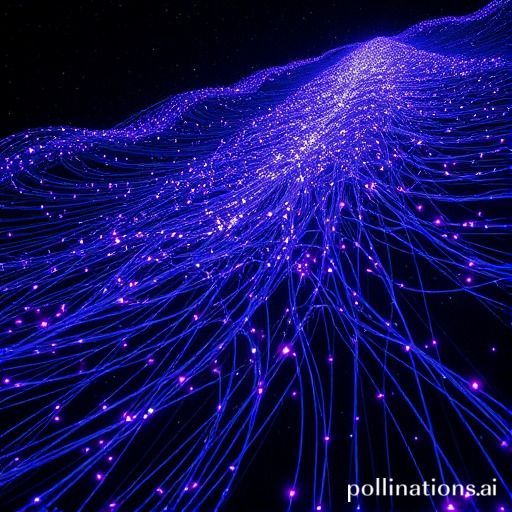
Filaments are long, thin structures that connect galaxy clusters and superclusters, while walls or sheets are relatively flat structures that contain numerous galaxies. These features form a cosmic fabric that determines the distribution of galaxies and superclusters. The "Great Wall" of Sloan, discovered by the Sloan Digital Sky Survey (SDSS), is a remarkable example of a huge sheet of galaxies that stretches for a billion light-years.

The Sloan Digital Sky Survey is a groundbreaking astronomical project that has revolutionized our understanding of the local universe and the cosmic web. SDSS has mapped the positions and distances of millions of galaxies, creating a detailed three-dimensional map of the cosmos. This survey has been crucial in identifying galaxy clusters, superclusters, and the complex filaments and voids that make up the cosmic web.
The local universe is a vibrant and dynamic environment filled with galaxies, groups, clusters, and superclusters. From the intimate interactions within the local group to the vast structures of the cosmic web, each element contributes to the grand narrative of the universe's evolution. Exploring the local universe allows us to understand our place in the cosmos and the complex relationships between celestial bodies. Studying galaxy groups, clusters, and superclusters provides valuable insights into the distribution of matter, the nature of dark matter, and the large-scale structure of the universe. As we continue to push the boundaries of astronomical research, the local universe will remain a crucial laboratory for testing our theories and expanding our knowledge of the cosmos. By unlocking the mysteries of our cosmic neighborhood, we come one step closer to understanding the vast and wondrous universe we inhabit.
Groups and Clusters of Galaxies (Jason Kendall, April 2024)
youtube
Where is Everything in The Universe Going? (History of the Universe, October 2024)
youtube
Sunday, October 13, 2024
#local universe#Youtube#galaxy groups#galaxy clusters#cosmic web#voids#filaments#astronomy#astrophysics#ai assisted writing#machine art#great attractor#presentation
2 notes
·
View notes
Note
Long expositional tirade.
Please.
[Text is bright orange and bolded, but has been Edited for accessibility.]
Sorry about that. Funny slash fucked up part of having progeny in any form - they take after you. Every day I think, surely at this point, Rose's gotta be outta ways to stealthily forcefeed me my own patented brand of nuclear orange medicine, and every day I am simultaneously pleasantly surprised and mildly horrified to be proven wrong.
Anyway. I got my fuckin' pantaloons back and we're done with the thinly veiled psychological warfare for the time being. So I got a couple minutes to give the people what they want.
Normally I'd have concerns about giving away all my plans, let alone in such dramatic detail. Oh, you're a mastermind supervillain and you're just gonna give the hero all the information in a neatly packaged two minute monologue? You're makin' some big brain moves the rest of us couldn't even hope to understand.
I'm sure you're thinking the same thing. "Yes, Dirk." You hiss through your teeth while jacking it furiously to your own literary competence. "Fall prey to your own ego for the umpteenth time this week and hand me the key to your downfall on a silver platter." And I'm like. Okay. With an enigmatic level of placidity.
I'm doing stuff. Things. Anticipating your dissatisfaction with such a memey non-answer, I continue on. To be blunt, as of recently I've been doing jack shit of fuck all, except waiting around. I am an irrelevant number of Earth C's revolutions along its axis into this trip across the Virgo Supercluster to find a needle in a haystack - the perfect planet for my plans.
It's a lot like picking one particular grain of sand outta the Sahara, but with way more grains, and billions of miles between each one. So as you can imagine, it ain't exactly a mentally stimulating process.
You see, on the relevant scales of spacetime, life is a fluke. An anomaly. Calling it a rare occurrence is being generous. It's not just the size of the planet, or the presence of water. The incubation period for successful generations of the most widely accepted philosophical definition of life is longer than my dick, and twice as dangerous. For a species to develop a level of cognitive awareness enough to question its place in the universe, a lot of shit has to happen. A Rube Goldberg Fractal of an infinite amount of Rube Goldberg Machines.
Sometimes, life gets pretty damn far. Take a trip to Chicxulub in the Yucatán. Find a gift shop there, and buy a velociraptor plushie to the impact crater of the K-pg extinction.
You'll look like a fucking moron, because velociraptors went extinct long before then.
If the variants of life on Earth C are crabs in a bucket, humans and trolls just happened to be the crabs at the very top who got their claws around the rim and got the fuck outta Crab Dodge before everything went pear-shaped.
The mere fact any amount of us survived the Sburb extinction event boggles the mind. Natural generation is clumsy and random. Many times human and troll alike were held back due to biological or sociological flaws.
Intelligent design ain't fuckin' real.
But what if it was?
3 notes
·
View notes
Text
Something ethically messed up and logically incomplete about treating every potential creation of an experiencing mind (even if you guarantee that it will have an ideally positive life experience) as a "we ought to pursue this" increase in good/value/utility.
The extreme of what I'm criticizing here is the longtermist view that we must pursue a future where we fill as much of the universe as we can with human minds experiencing the best possible experiences. (In simulations! because that way we can have more of them, with reliably positive experiences.)
As if hypothetical minds that don't exist, and would only exist if we actively caused them to exist, have ethically-obligating worth now.
As if it is ethically better to pursue a future in which we create an extra richly experiencing mind having the best possible experiences (even if that mind is in a simulation and doesn't interact with or in any way affect any other minds) than a future where we just don't create that extra mind.
There's something off about this view... a subtle slip/skip (misstep, assumption, error, etc) which feels paperclip-maximizer-y in nature. It's just that the paperclips are very convincingly shaped like actually good values. Like copy-pasting a snapshot of a good-to-achieve result, while missing at least one reason why it was good to achieve (a reason which is contingent on a mind already existing, or contingent on good odds of a new mind having certain effects beyond itself).
I don't have the time to properly drag this out into words, and it's not a priority for me to make it rigorous or convincing. But there's something more-than-one-dimensional about good/value/utility revealed by this. I would assert that even though
the transition from a mind experiencing a worse existence to a better existence is ethically positive, and
the transition from a mind experiencing a good existence to that mind not existing is ethically negative,
the transition from no mind to a mind experiencing its best possible existence is ethically neutral.
To me it's obvious that there's no contradiction to those three things. I think the only way it would seem contradictory is if you implicitly assume that ethical value is a simple integral of qualia over time. There's something at play that is best described by one or more of
assigning ethical values to the derivatives, to some or all of the transitions between states rather than to just snapshots of states, or
recognizing a different kind of ethical value, where its only worth maximizing within the "domain" for it which already exists, but not worth creating more "domain" within which it can be maximized (and perhaps this is the only kind of value);
and so minds which don't exist and have no external reason to exist are in some crucial sense ethically worthless until they start to.
This is of course without even touching the point (which I previously wrote down in my reply to torture vs specks) that when integrating the future, possible states further in the future are increasingly less certain. Arbitrarily far in the future, there are too many possibilities still impossible to rule out, so there is enough possible good and possible bad from any act to cancel each other out, the probabilities are so small that the ethical weight of each possibility is tiny anyway, and the uncertainties have multiplied to the point that all the possible outcomes have vast error bars on tiny likelihoods. This alone is enough to kill the idea that we today can assign significant probability or ethical value to outcomes like "we eventually populate the virgo supercluster and the majority of our descendents have good lives".
11 notes
·
View notes
Note
oh girl i could talk about space all day long this has been my special interest since i was a child lol
but yes lets hope it clears up some stuff, like you said earlier jwst has looked back quite far and found galaxies and black holes that are way to massive for the short amount of time they have been “existing” but also i heard a few months ago that now with jwst that the timeline might be just slightly off . that still wouldnt explain their sizes considering it takes a while to get that big. would love to hear your opinion on this
also now with jwst we can actually see past the dust and see the chemical output which just puts so much perspective into creation of the universe
on the other hand though im wondering about the great attractor , why are we here? why does it seem like the gravitation is stronger. ? also hy are globular around? whats the origin? do they develop into more or do they stay like that?
-🪐
to note on the first bit you had here, there's a few things i think i wanna bring up in the case of a mismatched timeline, which i agree with.
so that guy edwin hubble came up with the idea of cosmic expansion and the discovery that the universe itself is expanding assumingly from the big bang "blast" area (which is also not really an explosion, but instead, just a mere movement of mass, which still blows my mind (haha pun) just to think about. cosmic expansion, however, has no "center" unlike the image seen, because space is (theoretically) limitless, there shouldn't be a center, yet, all of the mass that moved from the BB had to have come from at least one area, right?
what if that wasn't true, though? what if, yes, the big bang was a massive movement, but instead of being some sort of big centerpiece, it was more of a chain reaction. as if a cluster of superclusters shot out of one area and then bashed against another and then collapsed into a symphony of simultaneous destruction and creation.
with that idea in your mind, that might allude to something else: what if the big bang wasn't the first, but instead, was the last big kaboom at the end of the chain? while yes, the universe is in an ellipse-ish shape, that the "center" was only the biggest blast of a chain reaction?
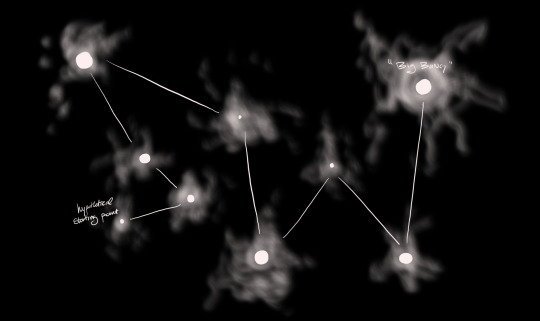
it may be hard to see from my cocks-for-hands-writing but the far left text says "hypothetical starting point", where the first movement actually (possibly) occurred. That the big bang was just the finale of the beginning that could've started far before the big bang did.
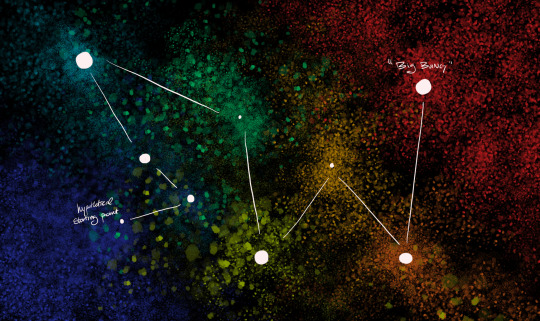
in that sense, billions of years later, while the big bang (see the red particles) and its impacts are only 14 billion years old, those in the far left are much older, therefore creating planets and life that is possibly billions of years older than the part of the universe that were in (i tried to make the colors mix to show how shit spreads, but I'm not sure if i did illustrate it right)
the very essence of life and the intelligence that we are is a shot in the dark. "one in a million" is actually a really low-ball way to explain it. we technically shouldn't exist, but the fact that we are, the fact that we do, is a miracle. the existence that we have right now isn't possible on most of the planets that we've discovered. as the great attractor is just a theory, i fully believe it's just the universe having created a mass that pulls itself back together again.
if your skin was torn apart, ripping into piece, wouldn't you try to mend it?
3 notes
·
View notes
Text
Week #33
225. Desolatecha Vendors: A small company that creates blind bag toy vending machines. They toys vend historical figured from Desolation's history. Where, they are all made up, but that is part of the fun!
226. Stone Bonsai: A small delicacy shop. The stone rats, who maintain the tunnels that connect the planets of Octavianus (née Forests) and Fields, also grow plants that grow rocklike (and breadlike) buds. Here you can buy your very own stone fruit producing tree, so you too can menace your friends!
227. Spice Museum: A museum of spices. The newts from Flow collected spices from all over Nthspace, daring you to smell them all. Of course, while the spices from Flow are the BEST, you should sample the wonders of the whole supercluster!
228. The Yarga Centrum: A yoga center. The yarglings have long, strong and flexible limbs, perfect for doing handstands and stretches. With their aid, you too can learn such relaxing poses like Melting Iceberg and Howling Wind.
229. Unblinking Ice Bar: An outdoors bar. The cooling mists, made from real Sustainable Glaciers will keep the guests and their drinks cool. Of course, if you want REAL freeze, you can get a VIP ticket to the Eyes Cellar(tm).
230. Mo's Fishing Gun Store: A very questionable fishing shop. Sells all kinds of gun shaped fishing rods, to the much concern of various agencies. The shop did not receive their license to sell fishing rod shaped guns.
231. The Future OF COOKING: A cooking utensil shop. A Notostracan artisan creates them by hand, following the future sight given instructions of a Besimulant. It is said, that the Minimal-ists, tiny creatures living in the outer asteroid rim of Hexaspace, always on the look out to steal the wonderful designs.
2 notes
·
View notes
Text
Staircase to the Stars: Mapping the Mind of the Cosmos
“We are born from stars. To look outward is to look inward. To journey into space is to discover ourselves.”
INTRODUCTION: THE COSMIC AWAKENING In the beginning, there was no light—only silence. Then, a flash.
A trillion degrees of heat burst into being from an infinitesimal point, and with it, the universe bloomed like a flower from darkness.
That moment—known as the Big Bang—was not the explosion in space, but the explosion of space itself. From this single origin emerged not only galaxies and stars but also time, dimension, and perhaps, in the deep quantum foam, the seeds of infinite other universes.
GALAXIES: THE LUMINOUS CITIES OF CREATION Galaxies are the cities of the cosmos, woven from the glowing lives and deaths of stars. Each spiral, elliptical, or irregular shape tells a tale billions of years long. In these immense structures, dark matter holds stars in place, invisible but undeniable.
The Milky Way: Our home. A barred spiral galaxy 100,000 light-years across, with over 100 billion stars. Somewhere near one of its outer arms, a yellow star named Sol nurtures a pale blue dot called Earth.
Imagine flying above the galactic disk. Below, like glowing embers in a fireplace, millions of stars swirl in a slow gravitational dance. Nebulae blossom in violet and rose, birthing new suns from cosmic dust.
Occasionally, stars explode—supernovae blazing brighter than entire galaxies for mere days. Their ashes enrich space with gold, oxygen, iron. Everything you are was once forged in such a fire.
THE UNIVERSE: A COSMIC TAPESTRY Zoom out.
Now you see not just the Milky Way, but its neighbors—the Local Group, and beyond that, the Virgo Supercluster, a web of hundreds of galaxies spanning hundreds of millions of light-years.
The Cosmic Web: Galaxies aren’t randomly scattered; they form threads and nodes—a vast structure resembling neurons in a brain. Is the universe itself a thinking entity? A simulation? A being?
We are bound by forces ancient and subtle:
Gravity, shaping stars and orbits.
Dark energy, pushing space to expand faster and faster.
Time, pulling all things toward entropy.
And yet, even amidst this inexorable expansion, life emerged.
SPACE: THE FINAL FRONTIER AND FIRST BEGINNING Space is not empty. It hums with microwave echoes of the Big Bang. It's punctuated with pulsars, quasars, black holes—riddles wrapped in enigmas.
Black Holes: Cosmic vaults of time and gravity. Anything falling in—light, matter, even information—vanishes, possibly into another realm.
Wormholes: Hypothetical tunnels through spacetime. Could they connect galaxies? Or even universes?
Interstellar Travel: Today it is fantasy, but tomorrow? Projects like Breakthrough Starshot and nuclear propulsion point to a distant age when humans—or their AI descendants—may sail from star to star.
MULTIVERSE: BEYOND THE HORIZON OF REALITY Here lies the edge of imagination, and perhaps, the next revolution in physics.
What if our universe is one of many?
There are several multiverse theories:
Quantum Multiverse: Every decision spawns new realities.
Cosmic Inflation: Our universe is a bubble in a vast sea of inflating space.
String Theory Landscape: 10⁵⁰⁰ possible universes, each with different laws of physics.
In some, gravity is stronger. Stars die young. Life is impossible.
In others, time flows backward. Or minds emerge from crystal. Or mathematics itself is different.
You could exist in one. Or in thousands.
CONSCIOUSNESS IN THE COSMOS Are we observers, or participants?
Some physicists suggest that observation shapes reality. Could consciousness be a fundamental force, like gravity? Is the universe fine-tuned for life—or is life an inevitable pattern in the vast cosmic puzzle?
From carbon and sunlight emerged us—beings capable of thinking about the universe, of contemplating its future, and of imagining things that have never yet been.
Could we someday create a universe?
THE FUTURE: HUMANITY’S STAIRCASE TO THE STARS The 21st century is the first chapter of a long, interstellar story.
Short-Term: Moon bases, Mars colonies, asteroid mining.
Mid-Term: Dyson swarms, post-scarcity civilization, space habitats.
Long-Term: Generation ships, faster-than-light travel, transcendence.
Post-Human Futures: Consciousness in machines, uploading minds, evolving into beings that live in starlight and code.
Final Frontier: Creating artificial universes—entire multiverses designed by intelligence.
THE SPIRITUAL DIMENSION: MEANING IN AN INFINITE COSMOS Faced with such scale, many ask: What does it mean?
Whether you call it God, the Universe, or the Unknown, something breathes through all of this. And perhaps, just perhaps, we are the eyes through which the cosmos sees itself.
To explore the stars is not just science. It is myth reborn, curiosity enflamed, spirit unleashed.
CONCLUSION: THE COSMIC MIRROR In the end, to gaze at galaxies is to gaze at our own origins.
To reach into space is not to escape Earth, but to fulfill the dream seeded within Earth itself—the dream to grow, to become more, to step onto the cosmic stage.
Final Line: "We are stardust becoming aware of stars. The staircase is before us. The stars are calling. And we must go—not just outward, but upward."
0 notes
Text
How is a Cluster Different from a Supercluster?

The universe is a vast and intricate web of celestial bodies, organized into different structural levels. Among these, clusters and superclusters play a significant role in the large-scale structure of the cosmos. While they may sound similar, they have distinct differences in terms of scale, composition, and gravitational influence.
What is a Cluster?
A cluster refers to a group of galaxies bound together by gravity. These galaxies interact with each other and often contain hundreds to thousands of individual galaxies. The cluster also includes hot intergalactic gas and dark matter, which contributes to its overall gravitational influence. Clusters are the largest gravitationally bound structures in the universe, meaning their galaxies move together under a shared gravitational field.
Examples of Clusters
The Virgo Cluster – Contains over 1,300 galaxies and is located about 54 million light-years away from Earth.
The Coma Cluster – One of the densest clusters, containing thousands of galaxies within a relatively small space.
What is a Supercluster?
A supercluster is an even larger structure that consists of multiple galaxy clusters grouped together. Unlike clusters, superclusters are not fully gravitationally bound, meaning that their individual clusters may drift apart over time due to the expansion of the universe. These structures span hundreds of millions of light-years and are among the largest known formations in the cosmos.
Examples of Superclusters
The Laniakea Supercluster – Home to the Milky Way, this supercluster contains over 100,000 galaxies and stretches across 500 million light-years.
The Shapley Supercluster – One of the most massive known superclusters, containing over 8,000 galaxies.
Key Differences Between Clusters and SuperclustersFeatureClusterSuperclusterSizeTens of millions of light-yearsHundreds of millions of light-yearsCompositionHundreds to thousands of galaxiesMultiple galaxy clustersGravitational BindingStrongly boundWeakly bound or unboundExamplesVirgo Cluster, Coma ClusterLaniakea Supercluster, Shapley Supercluster
Conclusion
Clusters and superclusters are both fundamental components of the cosmic structure, but they differ in size, composition, and gravitational influence. Clusters are tightly bound groups of galaxies, while superclusters are vast networks of multiple clusters. Understanding these structures helps astronomers map the universe and explore the forces that shape it over billions of years. https://fehujewel.com/
0 notes
Link
For decades cosmologists have wondered if the large-scale structure of the universe is a fractal: if it looks the same no matter the scale. And the answer is: no, not really. But in some ways, yes. Look, it’s complicated. Our universe is unimaginably vast and contains somewhere around two trillion galaxies. These galaxies aren’t scattered around randomly, but are assembled into a series of ever-larger structures. There are the groups, containing at most a dozen galaxies are so. Then there are the clusters, which are home to a thousand galaxies and more. Above them are the superclusters, which twist and wind for millions of light-years. Is this the end of the story? In the mid 20th century Benoit Mandelbrot brought the concept of fractals into the mainstream. Mandelbrot didn’t invent the concept of fractals – mathematicians had been studying self-similar patterns for ages – but he did coin the word and usher in our modern study of the concept. The basic idea of a fractal is that you can use a single mathematical formula to define a structure at all scales. In other words, you can zoom in and out of a fractal and it still maintains the same shape. Fractals appear everywhere in nature, from the branches of a tree to the edges of a snowflake. And Mandelbrot himself wondered if the universe is a fractal. If as we zoom out we will see the same kinds of structures appearing again and again. And in a way, that’s what we see: a hierarchy of structures at ever-larger scales in the universe. But that hierarchy does come to an end. At a certain scale, roughly 300 million lightyears across, the cosmos becomes homogenous, meaning that there are no larger structures and the universe is (at that scale) roughly the same from place to place. The universe is definitely not a fractal, but parts of the cosmic web still have interesting fractal-like properties. For example, clumps of dark matter called “halos”, which host galaxies and their clusters, form nested structures and sub-structures, with halos holding sub-haloes, and sub-sub-halos inside those. Conversely, the voids of our universe aren’t entirely empty. They do contain a few, faint dwarf galaxies…and those few galaxies are arranged in a subtle, faint version of the cosmic web. In computer simulations, the sub-voids within that structure contain their own effervescent cosmic webs too. So while the universe as a whole isn’t a fractal, and Mandelbrot’s idea didn’t hold up, we can still find fractals almost everywhere we look. The post Is the Universe a Fractal? appeared first on Universe Today.
1 note
·
View note
Text
https://globalbizoutlook.com/teslas-cortex-ai-supercluster-shaping-the-future-of-ai/
0 notes
Text



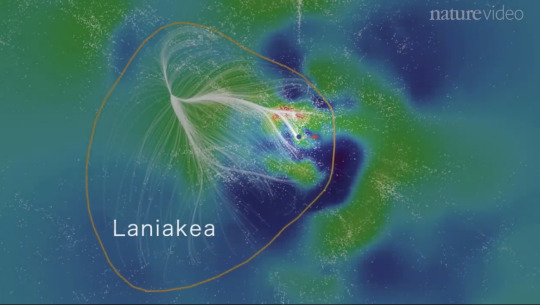

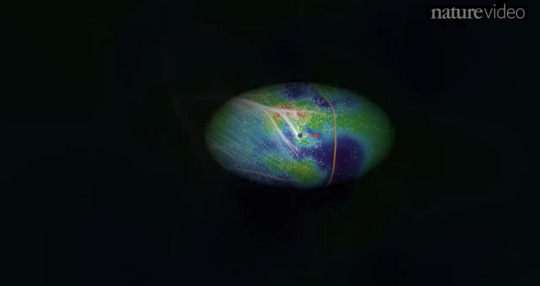

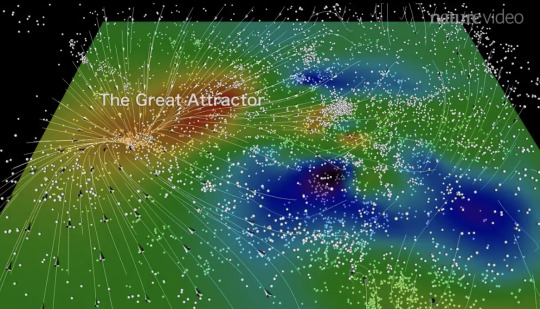

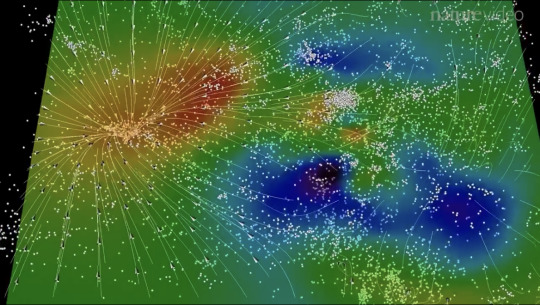
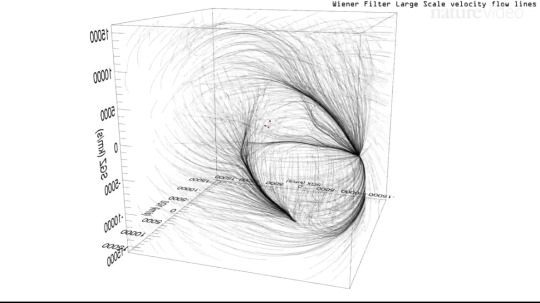

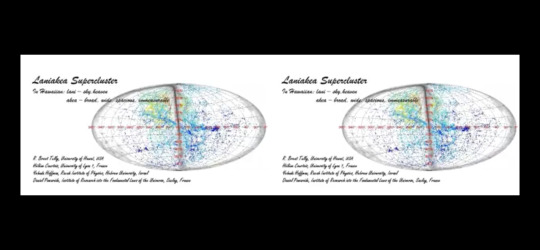
The shape of the Universe Deepspace Visible stars Laniakea Supercluster
Perseo-Pisces Supercluster
1 note
·
View note
Text
Dark matter distinguished hanging from the Cosmic web for first time:
Interestingly, cosmologists have distinguished dull matter dangling from gigantic fibers that stretch across the universe and structure a "inestimable web" that trap systems like morning dew on a spiderweb.
Scientists from Yonsei College in Seoul, South Korea, utilized the Subaru Telescope — a 8.2-meter optical-infrared telescope close to the culmination of Maunakea in Hawaii — and an impact that gravity has on light to in a roundabout way notice dim matter sitting on grandiose web fibers in the Extreme lethargies Cluster.This marks the very first identification of dull matter on the vast web, and could assist with affirming how this design — with strands that run for a huge number of light-years — has affected the development of the universe.
Otherwise called Abell 1656, the Trance like state Bunch is an assortment of more than 1,000 worlds and is found exactly 321 million light-years from us toward the heavenly body Unconsciousness Berenices. As a result of this enormous size and relative nearness, the Trance state Bunch is an optimal spot for researchers to chase dull matter on vast web strands.The inestimable web is an organization of fibers, comprised of issue, that feed gas into worlds, assisting them with developing. This web additionally helps channel cosmic systems together, driving them to bunch.
The primary fibers of the vast web are themselves the walls of system superclusters, with the wall comparing with the Trance like state Group known as the"great wall." The extraordinary wall was really the first superlarge structure known to man to be found.
Bunches of universes are accepted to accumulate where fibers cross, however these fibers are accepted to end among worlds and structure what're classified "intracluster fibers." Dim matter is supposed to run along these infinite web fibers hanging from those intracluster fibers.
Dim matter as an enormous framework:
Last year, the Keck Inestimable Web Imager, likewise on Maunakea, got the main direct light radiating from wispy web fibers that cross each other and stretch across the haziest corners of room. These are fibers that sit segregated between worlds, in the biggest and most secret bits of the astronomical web.
"Seeing" the area of dim matter around these vast web strands is something else entirely, be that as it may.
That is on the grounds that, notwithstanding making up an expected 85% of all the matter in the universe, dull matter is imperceptible on the grounds that it doesn't cooperate with light like ordinary matter that contains stars and residue does.
Dim matter's predominance over regular matter additionally implies it rules the fibers of the inestimable web, framing an imperceptible framework along which the universe's construction comes to fruition.
Notwithstanding, despite the fact that dim matter doesn't cooperate with light, it associates with gravity — and this communication influences the development of regular matter and light that we can see.
The group behind this examination exploited this idea, utilizing it to identify dim matter on inestimable web fibers strung all through the Unconsciousness Bunch.
Albert Einstein's 1915 hypothesis of gravity, called general relativity, proposes that items with mass reason the texture of spacetime to bend. Thus, the hypothesis makes sense of, what we see as gravity emerges from this shape. Moreover, when light from a foundation source goes through this curve, its way gets redirected.
This can prompt foundation sources seeming to move overhead, to be enhanced, or in a few outrageous cases, even to show up at different places in a similar picture. This is called gravitational lensing.
In this way, utilizing light from cosmic systems and stars behind the Trance state Group and helped by the high responsiveness, high goal and wide field of perspective on the Subaru telescope's Hyper Suprime-Cam (HSC), the group recognized a feeble lensing impact of the dull matter part of intracluster fibers interestingly.
This very first discovery of dim matter on terminal sections of the grandiose web assists with advancing affirm the presence of the huge scope structure spreading across the universe.
The group's outcomes were distributed in January in the diary Nature Cosmology.
0 notes